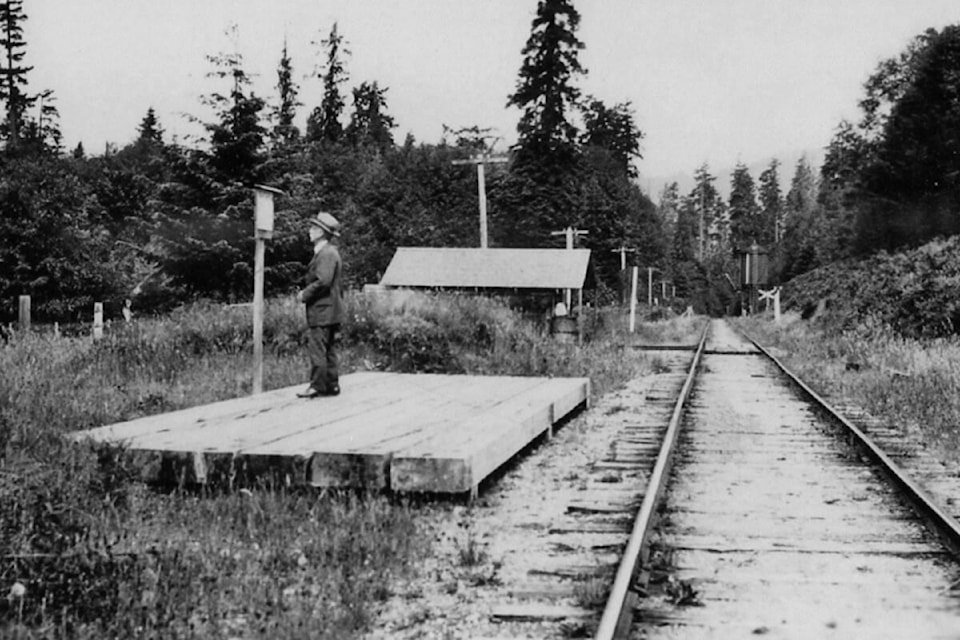Elida Peers | Contributed
This photograph shows a section of the Canadian National Railway, primarily transporting logs from the Sooke River uplands to the market. Nowadays, the route is known as the Galloping Goose Regional Trail.
The Canadian Northern Pacific Railway was established during the First World War.
This scene, given to the Sooke Region Museum by Norma Goudie, is labelled Milne’s Landing Station and was taken near where Meota Drive can be seen today, at Sooke River Road.
The line ran from Selkirk Inlet through Metchosin and northwest as far as Leechtown and beyond to Youbou, with a spur running to Cowichan Bay. (Note the telegraph poles along the track).
For a period between 1922 and 1931, passenger service ran on the line as well.
A single vehicle, known as a gascar, ran daily from Victoria to Sooke Lake.
Passengers travelling by train from Victoria to Sooke had two options. They could either stop at the Saseenos Station near the intersection of Saseenos Road and Highway 14 and walk into Sooke. Or they could continue until they reach the Milne’s Landing station and then walk down Sooke River Road.
The man dressed in formal attire appears to be waiting to board a train, possibly headed to Victoria. The undated photo could date back to the 1920s. You can spot a water tower beside the tracks at the far end of this railway view. These towers were primarily used to supply water for cooling the steam engines.
Steam locomotives were renowned for their mournful wail as their signal echoed through the hills. By the 1960s, when diesel engines had replaced steam locomotives, the railway had lost much of its charm with the loud blast of a diesel signal.
Taken over by the Capital Regional District in 1989, this stretch of the line is in constant use nowadays by hikers and cyclists, drawn to the incredible views found as the trail winds its way along the gorge of the Sooke River.
•••
Elida Peers is the historian of the Sooke Region Museum. Email historian@sookeregionmuseum.com.
RELATED: Romance of the steam railway
